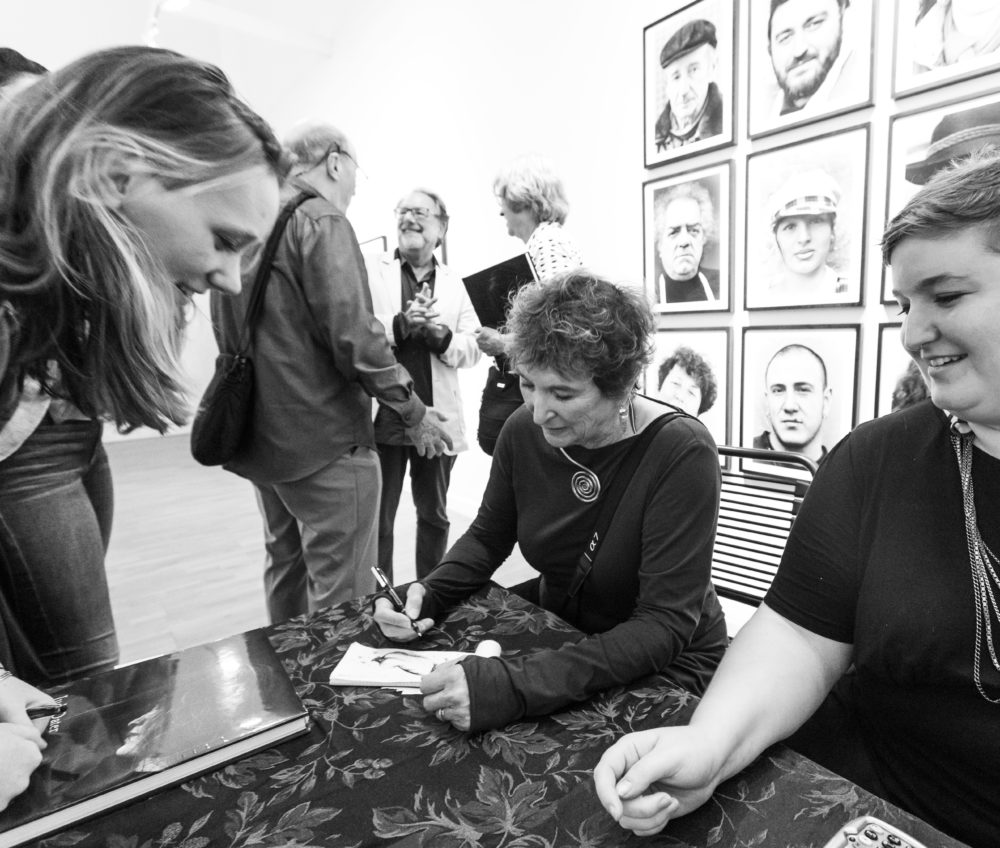
It’s the opening of Judy Dater’s “Only Human” exhibit at the Laband Art Gallery and she shares with LMU students, faculty, and visitors her 50-year journey as a photographer. It all began when she was five and would flip through the pages of Modern American Painting Book, admiring the artwork that continues to inspire her present-day work.
Dater, born in 1941, grew up in Hollywood. She studied art at UCLA and later, San Francisco State University, where she earned her bachelor’s and master’s degrees. It was during a photography class her senior year that she committed herself more seriously to the medium.
Early on in her career, Dater focused on nude self-portraits, as well as portraits of her female friends. Fellow artists like Imogen Cunningham and Edward Weston were influential mentors and friends who encouraged her talent. First and foremost, Dater wanted her photographs to tell a story and she would often reference the book of paintings from her childhood. In fact, Benton’s painting entitled “Persephone” inspired her famous photograph, “Imogen and Twinka.” The photograph depicts an elderly woman and a younger woman looking at one another while peeking around a tree. In this piece youth and age confront each other, but also demonstrate timeless connections between women.
When asked if the impetus behind her photography was to line up with the women’s movement of the 1960’s, Dater responded that she was more interested in “picturing the world rather than making a political statement.”
Dater’s artwork has always been introspective and a way for her to understand and express herself. She seeks a deeper connection to the world and her photography is a personal meditation on that desire. The signature image for this year’s Bellarmine Forum is a photo of Dater’s hands pulling down a car window, which she interprets as “pulling something away so you can see more clearly.”
It is clear that Dater loves to photograph the people around her. She’ll do portraits of people she runs into at parties, the post office, galleries, or even just people she sees while walking outside. Her projects have included self-portraits, portraits of women, men, Asians, and Italians. She has even done a series on capturing images of people who look like they’re “picture in pictures.” She transitions easily between studio photography and working outdoors, or in nature.
During Bellarmine Forum classes, students were able to visit the Laband Art Gallery and take in Dater’s black and white photos lining the walls. Students were impressed with the exhibit’s excellent display showing the progression of her work over five-decades. They also appreciated Dater’s humble demeanor, and her unique approach to finding and posing her subjects.
“‘Judy Dater: Only Human’ is a gathering of 50 of Judy’s masterpieces of portraiture. In each and every image there is a consistency in candor and authenticity — these are invitational images that draw us closer to the subject, face to face, if you will. The show is really a testament to Judy’s lifelong engagement with people and her commitment to a collaborative relationship between photographer and sitter,” said Karen Rapp, director of LMU’s Laband Art Gallery.
Through December 8, Dater’s exhibit “Only Human” will be on display in the Laband Art Gallery. It is part of LMU’s 2018-19 Bellarmine Forum entitled, “Collaboration and Creativity: Faith, Culture, and the Arts”. This year’s theme is dedicated to celebrating the power and potential of human connection and creative collaboration. Dater’s visit to LMU for the opening of her exhibit at Laband was the signature event of the fall semester. Many of the photos featured in the exhibit, can also found in a 200-page fine art book, Judy Dater: Only Human, 1964 to 2016, Portraits and Nudes, published by the Marymount Institute Press and TSHEHAI Publishers.
“We could not be more pleased to have this exhibition as part of this year’s Bellarmine Forum with its focus on the power of creative collaboration,” said Robbin D. Crabtree, dean of the Bellarmine College of Liberal Arts. “Dater’s photography is illustrative of the participatory aspect to faith, culture, and the arts. We hope her work inspires students to connect, create, and contribute to society in meaningful ways.”
Stop by the Laband Art Gallery to see Dater’s stunning depiction of what makes all us “simply and only human.”



